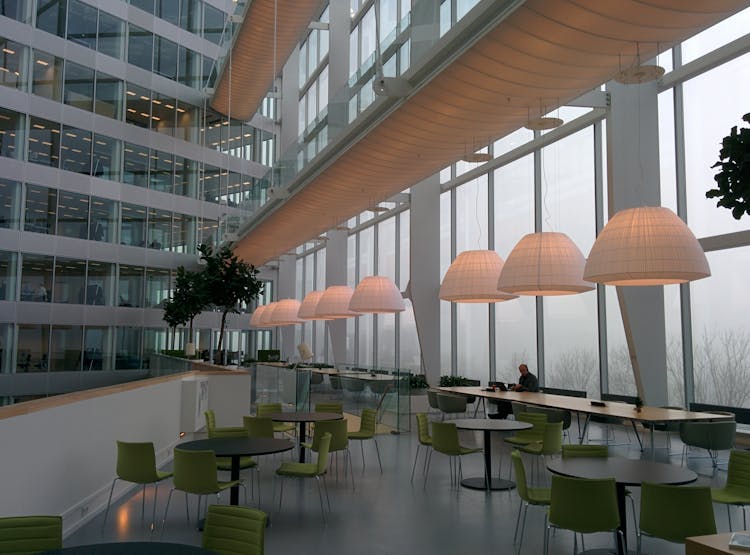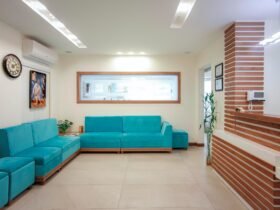Proper lighting in office environments is crucial for both productivity and well-being. Adequate illumination can reduce eye strain, minimize headaches, and improve overall mood, leading to a more efficient and comfortable workspace. As businesses increasingly prioritize the health and satisfaction of their employees, the choice of lighting has become a key consideration in office design.
Among various lighting options, linear light pendant lights have gained popularity due to their sleek design and versatility. These fixtures provide uniform light distribution, which is essential for reducing glare and shadows. Linear light pendants not only enhance the aesthetic appeal of office spaces but also offer significant health benefits. They contribute to better visual comfort, promote circadian rhythm alignment, and create an environment that fosters concentration and creativity. In this discussion, we will explore the specific health advantages of linear light pendants in office settings, underscoring their role in creating a healthier and more productive workplace.
Importance of Lighting in Office Spaces
Impact on Health
Lighting significantly impacts employee health, influencing both physical and mental well-being. Poor lighting conditions in offices can lead to eye strain, headaches, and fatigue, all of which decrease productivity and comfort. Insufficient lighting forces the eyes to work harder, causing discomfort and potentially potentially leading to long-term vision problems. Bright, glaring lights can also be harmful, resulting in headaches and visual discomfort. Moreover, poor lighting can disrupt the body’s natural circadian rhythms, affecting sleep patterns and overall health. Proper lighting, therefore, is essential not just for visual comfort but also for maintaining a healthy circadian rhythm, which is crucial for sleep quality and mental health.
Impact on Productivity
The quality of lighting in an office environment is closely linked to productivity levels. Studies have shown that well-lit workspaces enhance performance, improve mood, and increase job satisfaction. For instance, research indicates that employees working under optimal lighting conditions make fewer errors and exhibit better concentration. Proper lighting can also boost creativity and reduce stress levels, contributing to a more positive and productive work environment. Effective lighting solutions, such as modern led pendant lights, ensure even light distribution, reducing glare and shadows, which helps maintain a comfortable and efficient workspace.
Basic Regulations and Standards for Office Lighting
Proper lighting in office spaces is not only beneficial but also regulated by several standards to ensure safety and comfort. Detailed information about these regulations can be found in the California Codes.
California Code of Regulations, Title 8 (CCR Title 8)
The General Industry Safety Orders within CCR Title 8 include requirements for adequate lighting to prevent accidents and ensure safety in workplaces. These regulations provide guidelines for maintaining appropriate lighting levels to create a comfortable and safe work environment.
California Building Code (CBC)
The California Building Code, Title 24, Part 9, outlines general lighting requirements for buildings, including office spaces. These regulations ensure minimum lighting levels are maintained to guarantee safety and comfort in work areas. While the CBC also covers structural aspects, it provides specific recommendations aimed at creating a safe and comfortable working environment.
Occupational Safety and Health Administration (OSHA)
OSHA, a federal agency under the U.S. Department of Labor, is responsible for ensuring workplace safety and health in the United States. While OSHA does not set specific lighting levels, it mandates adequate lighting to prevent accidents and ensure safety. OSHA’s regulations focus on preventing risks associated with poor lighting conditions.
Illuminating Engineering Society (IES)
The Illuminating Engineering Society (IES) is a professional organization dedicated to developing standards and recommendations for lighting. The IES Lighting Handbook provides comprehensive guidelines for lighting levels and distribution, ensuring comfortable and productive working conditions. These guidelines are widely used in office lighting design to create optimal work environments.
American National Standards Institute (ANSI)
The ANSI/IES RP-1 standard provides requirements for illuminance levels, light distribution, color temperature, color rendering index, and adjustable lighting. These standards are crucial for preventing vision problems and reducing fatigue among employees. By adhering to ANSI standards, offices can ensure that lighting installations promote health and productivity, minimizing the risk of lighting-related issues.
Advantages of Linear Light Pendant
Uniform Lighting
Linear pendant lights are designed to offer even and consistent light distribution across office spaces. Their elongated structure ensures that light is spread uniformly, minimizing shadows and dark spots that can strain the eyes. This uniform illumination is particularly beneficial in reducing glare, a common issue with many lighting systems that can cause significant eye strain and discomfort. By providing consistent lighting, linear pendants create a visually comfortable environment, which helps employees focus better on their tasks and reduces the likelihood of headaches and visual fatigue. This uniformity in lighting is crucial for maintaining a productive and healthy workspace, ensuring that all areas are adequately lit without the harshness that can come from other types of linear suspension lighting fixtures.
Energy Efficiency
Linear pendant lights are known for their energy efficiency, often utilizing LED technology, which consumes less power than traditional lighting solutions. This efficiency translates to lower energy bills and a reduced environmental footprint, making them an eco-friendly choice for office spaces. By using less electricity, these lights help to conserve energy and reduce greenhouse gas emissions, contributing to a more sustainable work environment. Furthermore, the long lifespan of LED lights means fewer replacements and less waste, enhancing their environmental benefits. Adopting energy-efficient lighting solutions like linear pendants not only supports corporate sustainability goals but also promotes a greener, more responsible approach to office management.
Linear light pendants offer significant advantages in terms of uniform lighting and energy efficiency. Their ability to provide consistent illumination across workspaces helps reduce eye strain and improve overall comfort, while their energy-saving features contribute to environmental sustainability. These benefits make linear light pendants an ideal choice for modern office environments, supporting the well-being of employees and the planet. You can contact lighting supplier LED Lights Direct to learn more.













